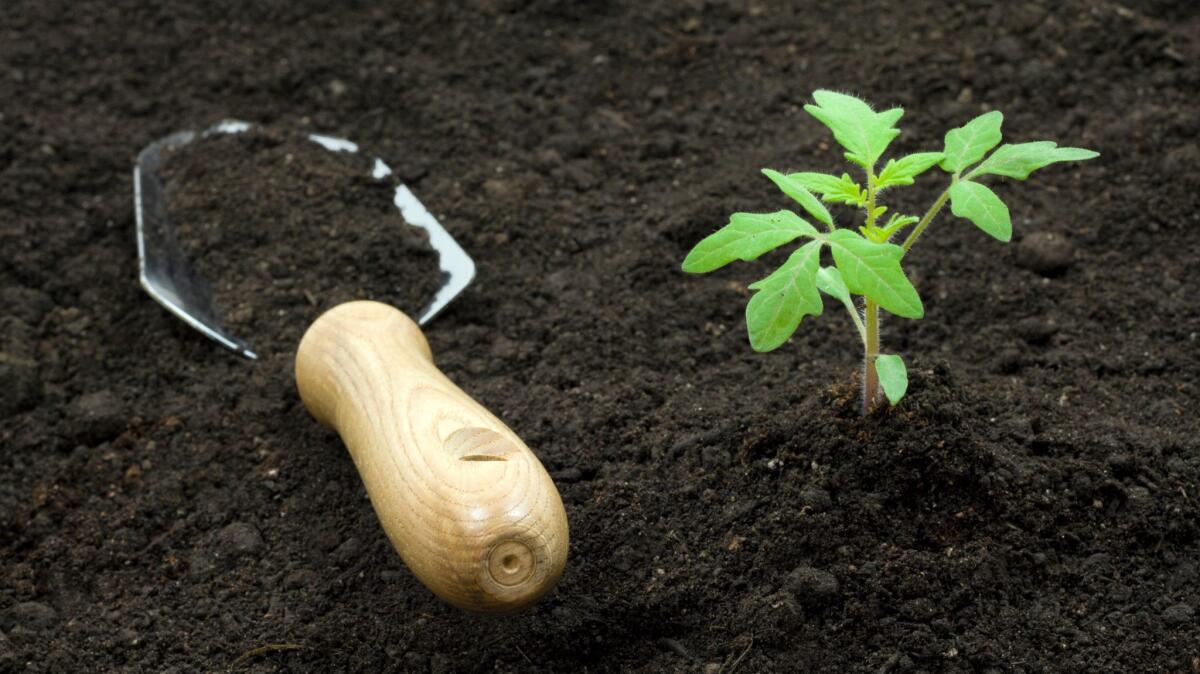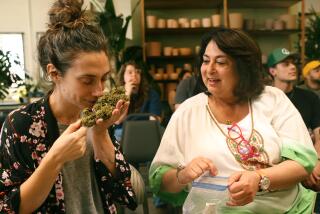Your 9-point checklist for prepping a spring garden

Southern California gardens are mud-luscious this year, for the first time in years. But by mid-March — barring any more deluges — the ground should be dry enough and the temperatures warm enough to start planting the flowers, fruits and vegetables we’ve been craving during our chill, wet winter.
There are plenty of plant sales in March and April to fill up your plots and pots, but before you start buying, take a day to do a little planning and prep in your garden, said Lucy Heyming, a master gardener in Riverside and host of the “Gardening With Lucy” show online. Here are her tips for prepping the perfect spring and summer garden:
1. Follow the sun
Before you start digging, consider location. Edibles such as tomatoes, peppers, eggplants, corn, melons, squashes and beans crave warm temperatures; they also need lots of sunshine to thrive, at least six to eight hours of full sun every day.
2. Feed the soil
Put your garden in a level, well-drained area and shovel in a few inches of amendments, such as compost, peat moss and well-aged manure (not fresh, which will burn plants) to lighten and enrich the soil, because plants that produce food and flowers need more nutrients than native soils can provide.
3. Be water wise
Consider the water source for your garden, which will need regular irrigation, especially in the heat of summer. Installing a drip system or soaker hoses covered by mulch will keep plants happier and help reduce water costs. (And make life easier on you.)
4. Raise it up
If you have clay soil, or a problem with pooling water, consider putting in a raised bed so that you can control the soil type and irrigation. “You want a light, ‘arable’ soil, where you can just put your hand in the soil and move it around,” Heyming said.
5. Plant for the season
Cool-weather crops like broccoli and leafy greens will shrivel or quickly bolt (go to seed) in the summer heat. Even planting carrots or beets after April is dicey since the seeds won’t germinate in warm temperatures. Before you buy any plants, check the California Master Gardener Handbook Table 14.2 to be sure you’re planting a warm season plant. It will also help you start planning ahead to a fall and winter garden.
6. Size matters
Before buying any plant: Consider how much produce your household will eat and how much time you have to maintain your garden. Why? Because harvesting can be as big a job as watering, weeding and feeding. “I need to take my own advice,” Heyming said ruefully, looking around her sprawling garden with nearly a dozen large, raised beds. “I love experimenting and planting new things, but I also have my husband to help me. If he wasn’t around, I’d only be planting two of these boxes.”
7. Go for quality fertilizer
Invest in a good NPK fertilizer that provides a balance of nitrogen (N), phosphorus (P) and potassium (K), and plan on regular feedings throughout the season. Heyming prefers organic fertilizers because they help build the soil, but whatever you use, follow the directions for application on the package.
8. Document it
Keep track of what you planted — and when and where — so you can refer to it next year. It will help you save time next year, and will help you avoid planting the same crops in the same places. (Rotating your crops is a good way to deter insects and diseases.)
9. Plan for pests
Just face it, there will be pests. Heyming steers clear of pesticides and instead takes a relaxed approach. Heyming loves to experiment with heirloom tomatoes, but she has had such a problem with nematodes — microscopic worms — stunting the tomato plants in her yard that she always puts in a few pest-resistant varieties like Celebrity too, just to ensure she gets some kind of tomato crop. She also suggests experimenting with “companion planting,” a technique that involves bringing in natural insect repellents. (She swears by planting marigold and anything in the onion family around her tomato plants, for deterring pests.) Check out the ATTRA Sustainable Agriculture companion planting chart for more ideas.







